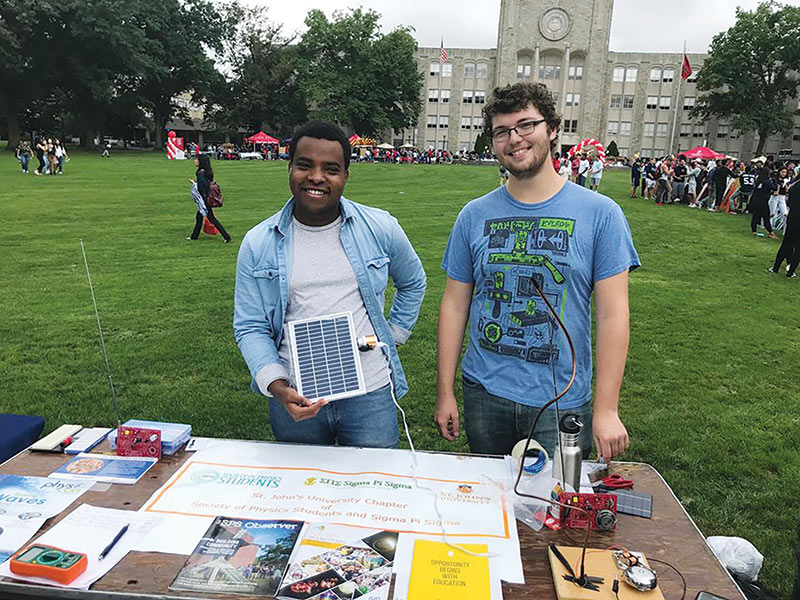Reenergizing Sigma Pi Sigma: A Call to Action
Spring
2019
Unifying Fields
Reenergizing Sigma Pi Sigma: A Call to Action
Vanessa Chambers, AZC Zone 15 & SPS Member, Utah State University
What is Sigma Pi Sigma? What does it represent? What can it do for you?
In 1921, five undergraduates and four faculty members at Davidson College officially formed the very first chapter of Sigma Pi Sigma, an organization to recognize outstanding scholarship in physics. This organization acquired membership in the Association of College Honor Societies in 1945 and eventually became affiliated with the American Institute of Physics. Since the inception of that first chapter, numbers have grown continuously. There are currently 580 chapters across the globe, with the majority in the United States. With our growth and approaching centennial, the SPS & Sigma Pi Sigma National Council felt it was time to take stock of our membership and think about our priorities. Thus, the National Council Sigma Pi Sigma Committee was formed from three student associate zone councilors, three faculty zone councilors, the Sigma Pi Sigma president, and a staff liaison. Our charge is to tackle some of these questions and help provide some guidance for the future. But to do this effectively, we’re going to need your assistance!
As members of Sigma Pi Sigma, what role has your membership played in your life? When was the last time you communicated with other members, your home chapter, or a chapter at a nearby university? If you have a meaningful response to these questions, then we applaud you! If you have not had contact with your home or local chapter but would like to, the Sigma Pi Sigma Committee is here to help. We are working to create pathways that will facilitate renewed and greater ties within our community.
We are truly interested in the benefits that membership in Sigma Pi Sigma has provided for you in the past and what benefits you would like to see in the future.
One important step toward providing a better, more fulfilling experience is the new Alumni Engagement Program (http://www.spsnational.org/programs/alumni-engagement). This program provides opportunities for SPS and Sigma Pi Sigma members to communicate with alumni who want to give back, as well as encourage alumni to engage with their home chapter or chapters in their area. There are several ways alumni can participate: speaking engagements, internship opportunities, job shadowing, and more. Your participation in this program is encouraged, and you can visit http://spsnational.org/connect to get started.
This committee and the SPS National Council would also like to hear from you! Inside this issue of Radiations you will find a survey card with a link to our engagement survey. You can also visit http://tinyurl.com/sigmapisigma19. As you consider your responses, please think about what could be done to improve Sigma Pi Sigma as an organization, particularly after induction. What benefits would have been useful directly after induction, and what benefits might be useful as you move into a career and beyond?
Sigma Pi Sigma was conceived to create community among those with a genuine dedication to physics. While it maintains its status as a way to honor academic excellence in the field, there are certainly latent opportunities to promote a greater sense of engagement and value for both existing and future members. Please take a few minutes to complete the short survey and provide insights on how to best achieve this goal and help Sigma Pi Sigma serve its members better than ever.
This is the legacy of Sigma Pi Sigma and your legacy. Please help us kick off our next century with a renewed sense of what it means to be Sigma Pi Sigma—a place where members can share expertise, take pride in their achievements, and find a sense of belonging within a supportive community. 
